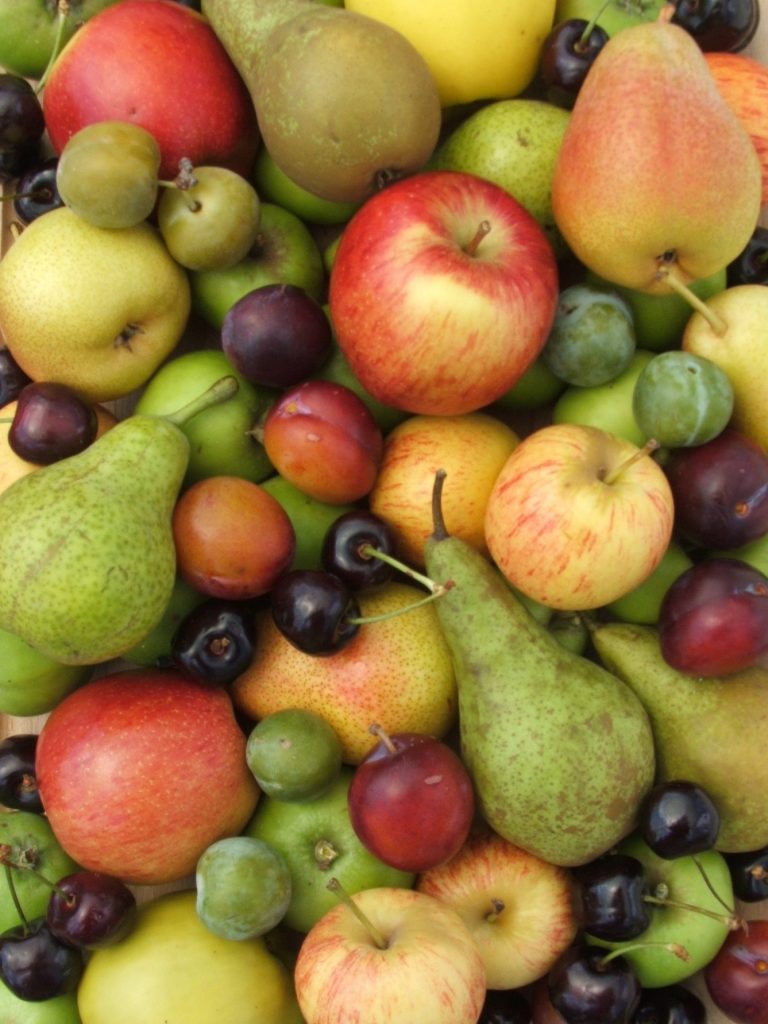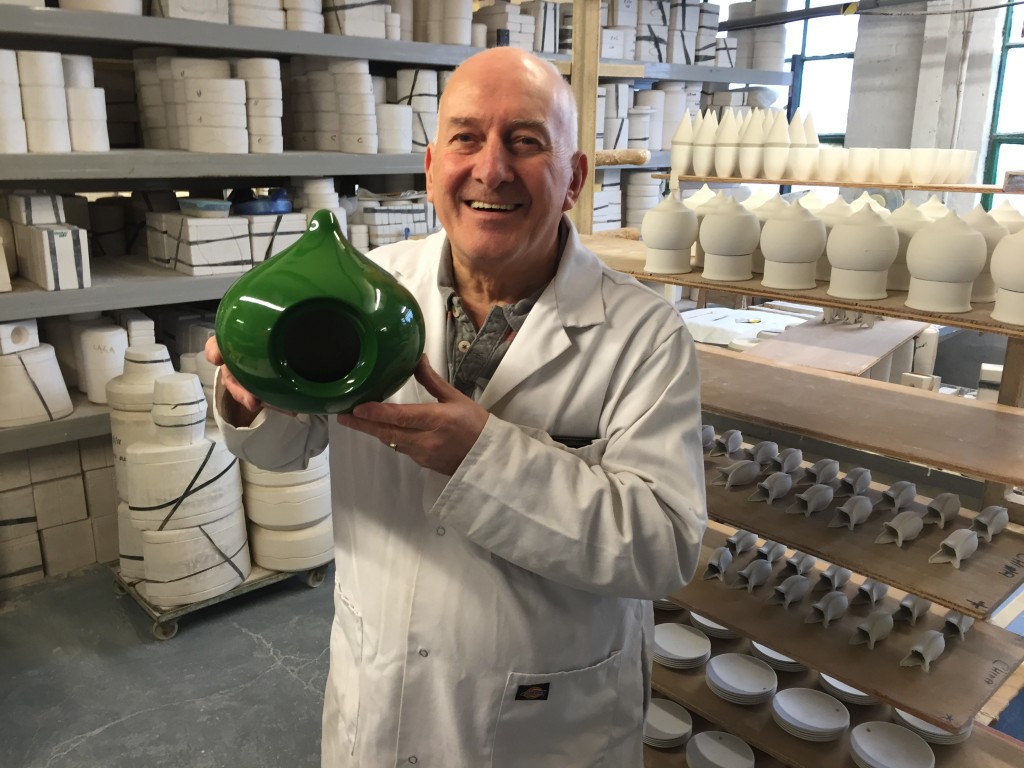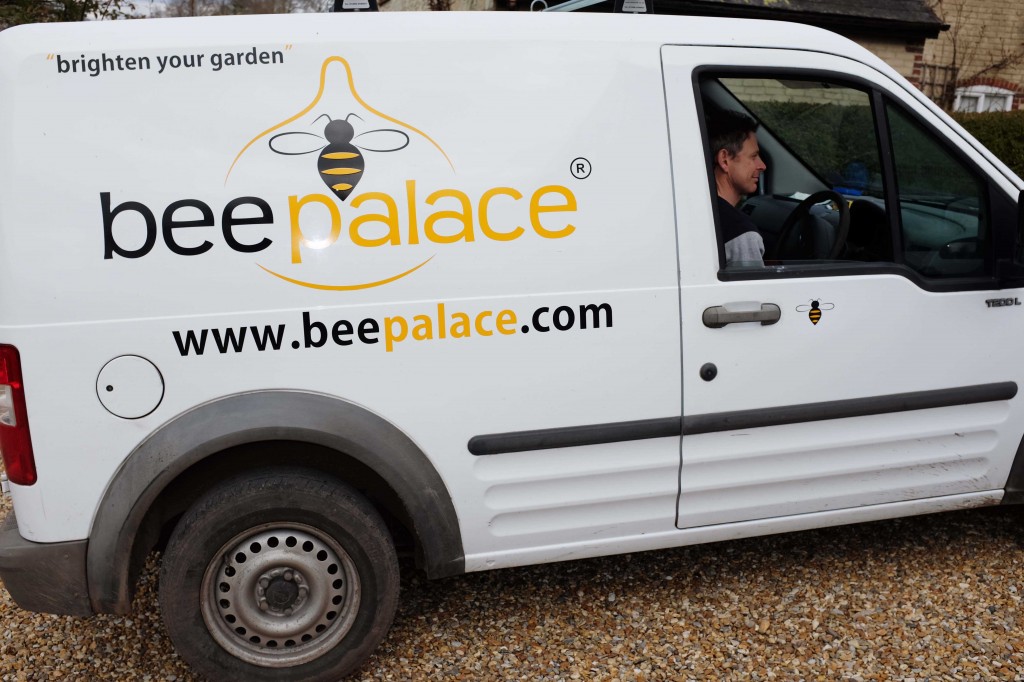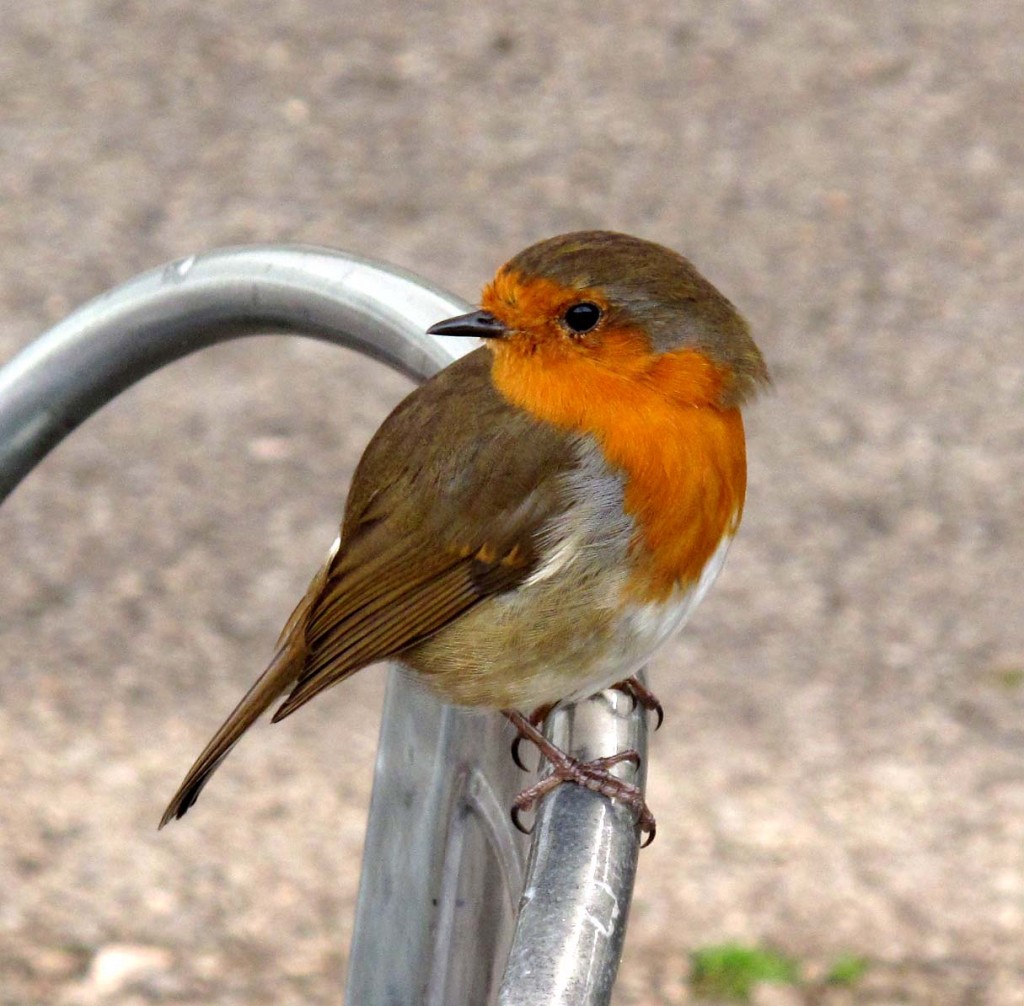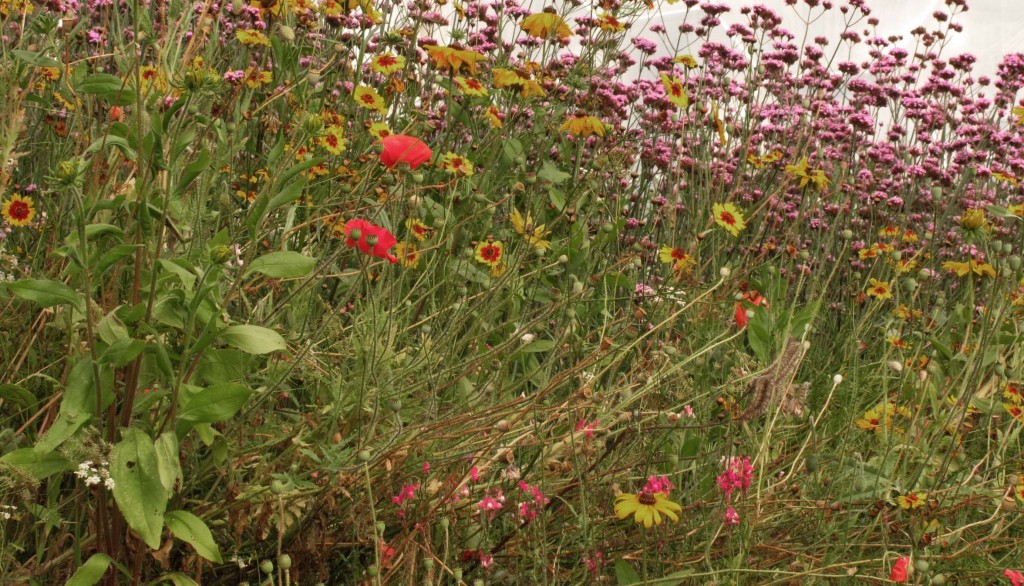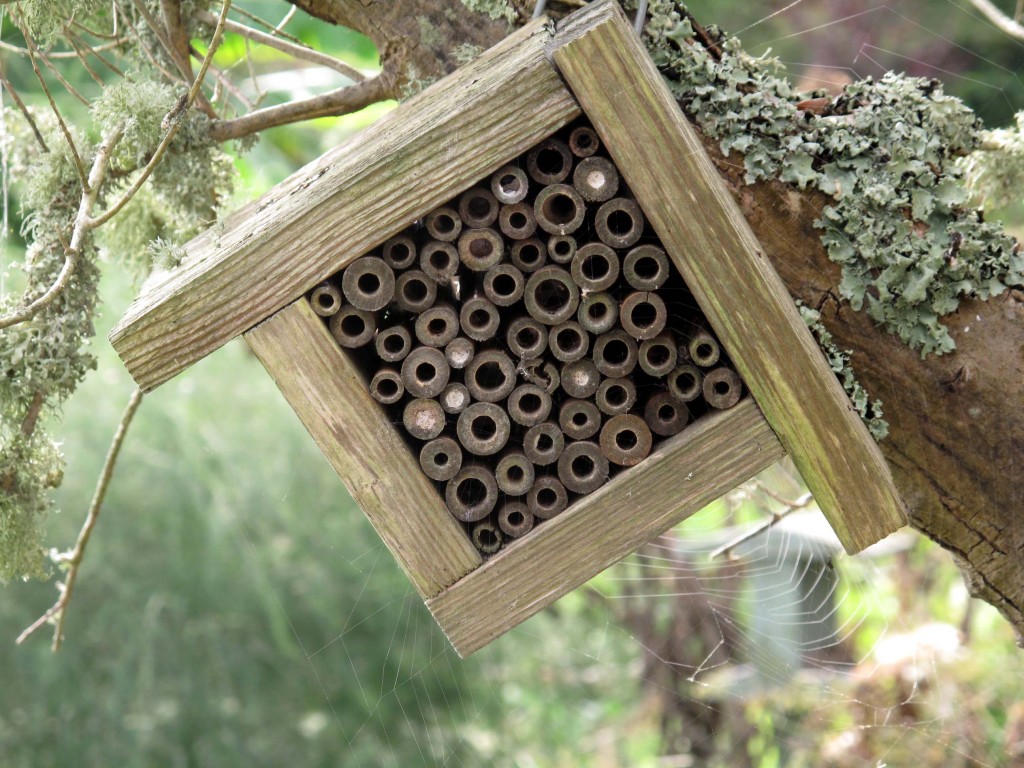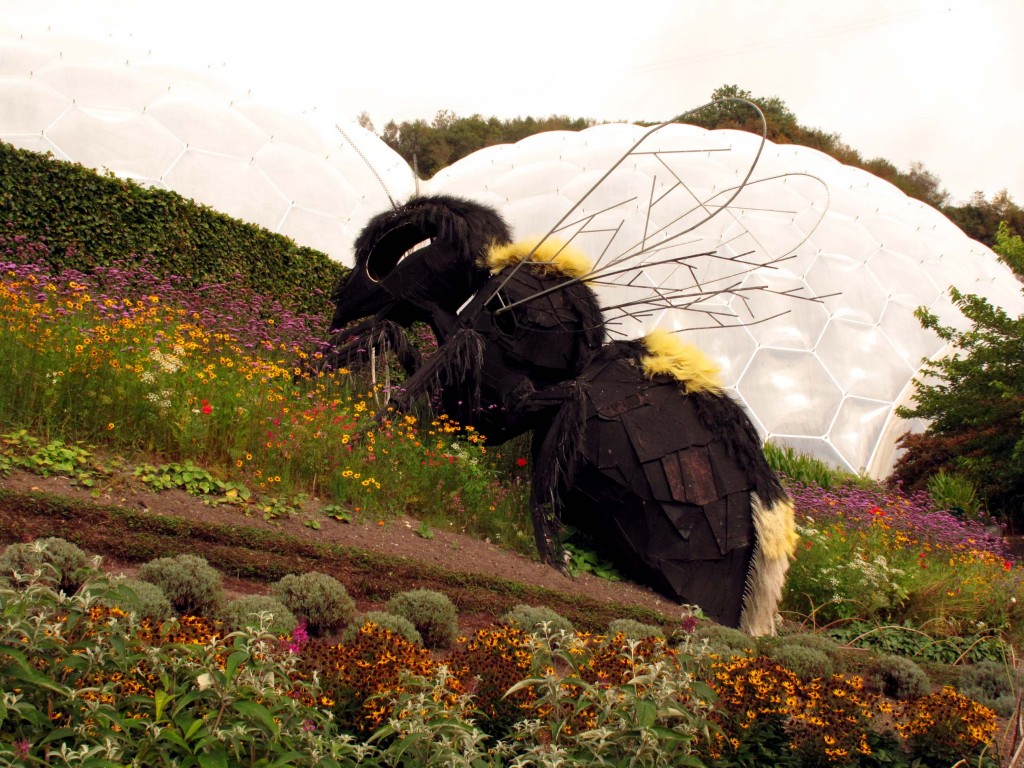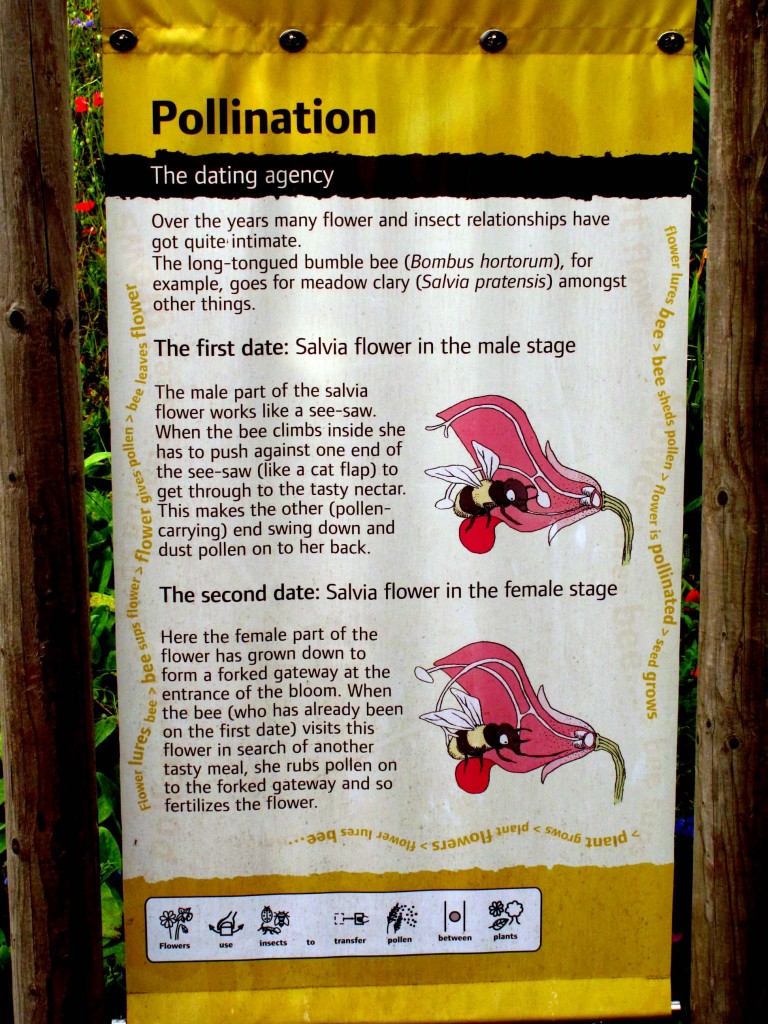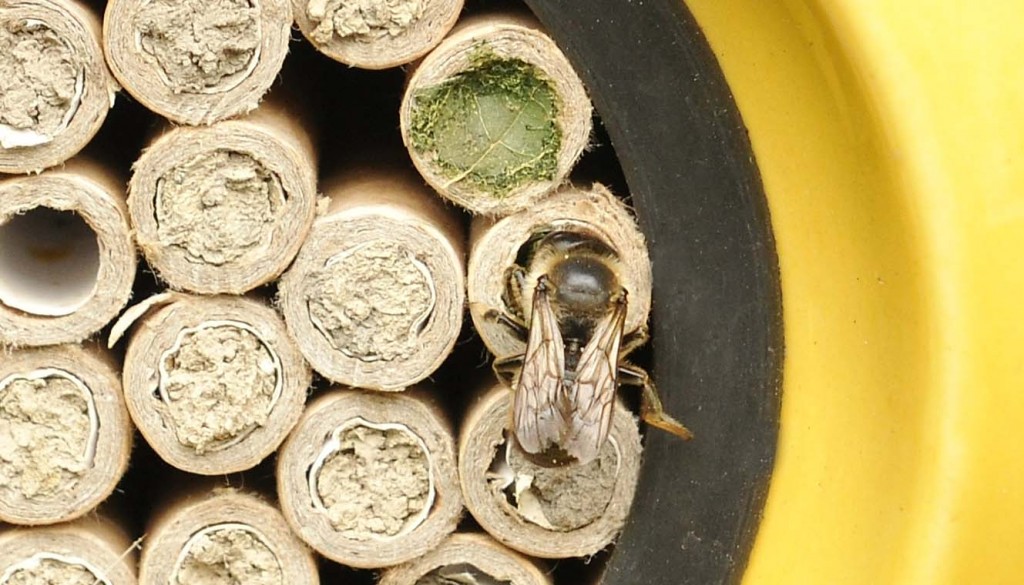When we started beepalace, one of the statistics that we found truly mind-boggling was that it can take around 20,000 honey bees to pollinate an acre of apple orchard but just 250 solitary bees. Isn’t that amazing? Read the rest of this entry »

- home
- |
- about the bee
- |
- about the beepalace
- |
- gallery
- |
- shop
- |
- contact us
- |
- blog
Heritage orchards: the ultimate bee-friendly forage
May 1st, 2017
Blooms for Bees – mapping Britain’s Bumblebees
March 31st, 2017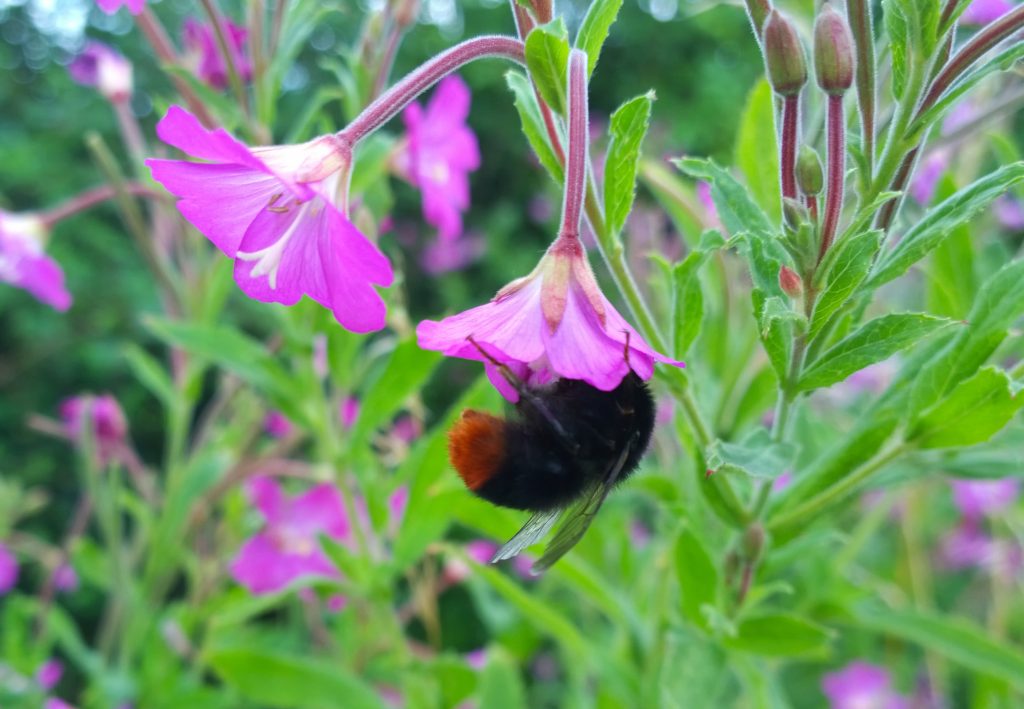
An exciting new research project launches in the first week of April, which aims to gather more information about our bumblebees by inviting volunteers to conduct short 5 minute surveys in their gardens, much as the RSPB do with their annual Big Garden Birdwatch. We were delighted to have a chat with Judith Conroy, one of the researchers for Blooms for Bees, to find out a little more…
“The flash of a red mason bee lights up a grey spring”.
June 20th, 2016Jonathan Tulloch writing in The Times (30/06/2016) lavished praise on the red mason bee when he chose it as the one animal he would nominate for a berth on the ark! Given the weather we have had recently, this may not be far from the truth!
“The bees’ needs”
April 7th, 2016We are very pleased to have embarked on some co-branding with Seedball which is part of Project Maya (their aim is to provide meadowland in urban spaces throughout the world! Inspiring!).
Brian, our very popular Potter from Stoke…
February 22nd, 2016We published this picture of Brian, our Potter, at his workshop in Stoke on Trent on our Facebook page and got a lot of “likes”. Everyone likes a happy face! He’s a fantastic potter running a family business with a real passion for producing good pottery. Read the rest of this entry »
Happy Christmas!
December 22nd, 2015![]() It’s been a strange year from the bees perspective! There they are working their socks off and producing a load of goodies for us humans and they read in the Bee Times that we have lifted restrictions on pesticides that have been linked to their “genocide”. Thanks a bunch! Then evidence emerges that even organic pesticides can be harmful to them! Good grief! What kind of world is this they wonder where insects that do so much good are treated with such distain! Then they look at the other Times and think goodness, it isn’t just us, they try and destroy each other too! I’m making light of some serious problems, but oft a true word said in jest!
It’s been a strange year from the bees perspective! There they are working their socks off and producing a load of goodies for us humans and they read in the Bee Times that we have lifted restrictions on pesticides that have been linked to their “genocide”. Thanks a bunch! Then evidence emerges that even organic pesticides can be harmful to them! Good grief! What kind of world is this they wonder where insects that do so much good are treated with such distain! Then they look at the other Times and think goodness, it isn’t just us, they try and destroy each other too! I’m making light of some serious problems, but oft a true word said in jest!
Luckily the forces for hope and optimism are incredibly strong so we continue to do what we can to ensure humanity and common sense prevail.
This is the time of year when many, many people show their generous and caring side and we often enter the new year with a renewed desire to make changes to body size, fitness, general consumption and to the world. And what a glorious, fantastic world it is despite the challenges!
A lot of people will receive beepalaces for Christmas and maybe some of them possibly will read this!
If you have received a beepalace for Christmas then someone special thinks you are too and thinks or knows that you will appreciate one of the most amazing wonders of nature that can be found on your doorstep, as well as knowing you appreciate design and style!
Your beepalace will allow you to get very close to the fascinating world of the solitary bee – a bee that can be 80 times more productive than a honey bee, plus it doesn’t sting or swarm – a benign, hard working creature that we need to sustain our world.
We hope you enjoy your gift and that if you are unfamiliar with this aspect of the natural world you will be stimulated to find out more about it and to encourage the education of others. We hope also that you will use it as it is also intended, as an eye catching piece of garden architecture.
We will close for Christmas until mid January and would like to wish everyone a very Merry Christmas and a Happy and Peaceful New Year!![]()
![]()
A quiet revolution for craftsmen…
May 18th, 2015Spring has been a little hit and miss but we have seen very high levels of activity in the garden. When we have learnt how to post a video we will share some very lively clips! Can anyone help? It’s an age thing!
We attended the Firle Garden Show since I wrote here last. It was very disappointing. Hidden away in a cavernous marquee with a mish mash of stalls it isn’t an experience we want to repeat. All the stallholders were good company but the crowds we were expecting did not materialise. A great shame as Firle is such a lovely spot. Nevertheless two nights at The Rose Cottage Inn, Alciston went some way to make up for it, tho Nicks stay at the Hilton, Eastbourne wasn’t quite the Park Lane experience he had been hoping for!
The title of this piece is taken from an article by Luke Johnson (serial entrepreneur) in the Sunday Times. He talks about old craft skills being revived in Britain and “a hunger for real products and a rejection of a disposable culture”. We wholeheartedly support this. The beepalace is made in Stoke-on-Trent and is entirely made in England. It should last a lifetime (unless dropped from a height). It comes at a cost because a lot of time goes into making one. From the model and moulds required for it to be slip cast and glazed to it being hand assembled. It is time consuming and we have sourced what we think are the best quality materials (Kew Gardens share the same nesting tube maker that we use).
Britain has a long tradition for making quality goods. Things that are thought through and designed to look beautiful and to last. We are really proud to be part of this movement.
You may have seen Nick driving our natty van around the Hampshire highways and bye ways – if you see it be sure to give him a toot – that should keep him awake!
There are some new colours we have added to the range of beepalaces which we hope will go with most types of outdoor spaces. Sage and Ochre are proving very popular.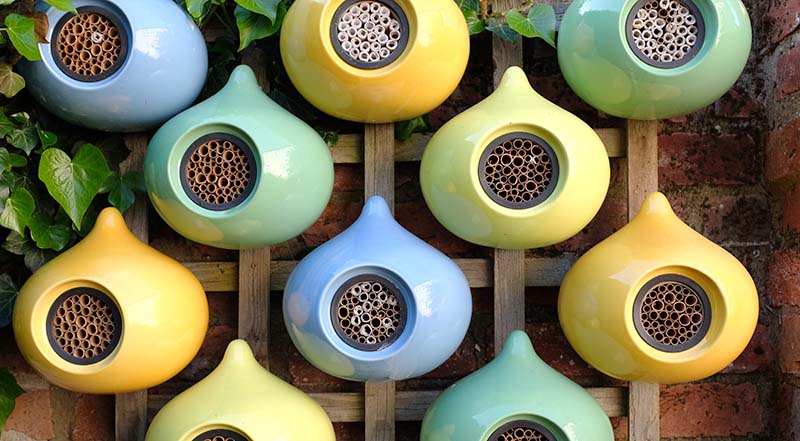 Our next Garden Show is at Stansted Park 5-7 June. We hope we might see you there!
Our next Garden Show is at Stansted Park 5-7 June. We hope we might see you there!
Getting ready for a busy year…..
February 5th, 2015Happy new year!! It’s never too late!
The beepalace team are planning a busy and exciting 2015.
Nick and family are back from Oz from where he posted some nice pics on Twitter. We were in India where the only reference to bees we saw was that the Hindu god of love is always accompanied by parrots, bees and a warm breeze.
But reading a little bit about bees in India it comes as no surprise that they are under threat. The Times of India reported a while ago that the decline in bee activity might be a worrying result of mobile phone usage :
“Frighteningly for India, the crisis (in the decline of the bee population) may now just be hitting home. Kerala has recorded a similar phenomenon (loss of bees), as have other parts of the country. But what’s causing this bizarre natural phenomenon could have something to do with the way you talk. Researchers investigating the trend say radio frequency radiation RFR) emitted by mobile phones and towers is the real culprit.”
Also, the Indian rock honey bee, the largest honey bee in the world, is reportedly in decline. These bees are particularly sensitive to air and noise pollution, so their decline can be seen as another casualty of modern living. But at least there is research into these issues so we can hope that there will be solutions forthcoming.
The beginning of the year is a time to check stock and prepare for the Spring. Brian, our amazing Potter from Stoke is preparing some new samples of green and yellows and we are also looking at an aubergine glaze. We hope to have some more great colours to offer customers this year.
We are also going to provide a slightly wider range of nesting tubes in each beepalace. We hope this will encourage more nesting activity and we can continue to monitor the success rates for various tube diameters in order to continue to provide the best nesting place for solitary bees.
We are greatly looking forward to a busier fair schedule in 2015 that currently includes:
Firle Place (April 24-26) – at the foot of the South Downs near the fascinating Charleston House, home to some of the Bloomsbury set
Stansted Park (June 5-7)
Loseley Park (July 24-26 July) – just south of Guidlford on the A3
Weald and Downland Open Air Museum (14-15 November) – a brilliant place for a day out
Stansted Park Christmas Fair (November 21 -22)
Petersfield Christmas Fair (December 6)
Plus we hope to be at Longstock again and at South Harting festivities and a few more venues to be announced.
Whilst the bees are sleeping the birds are feeding – here are some outside the beepalace offices yesterday:
The Eden Project ….what an achievement….
October 7th, 2014We first went to the Eden project on our way to a wedding in Cornwall in 2002. It was about a year after they had opened their doors to the public. The bio-domes looked impressive but the landscaping was still raw. The Mediterranean bio-dome was sparse and the Tropical Rain Forest in its infancy . Seeing it again 12 years on was quite an experience. Our first visit lasted a couple of hours and we said how we thought Tim Smit’s achievement was phenomenal and hoped that it worked. This time we spent 6 hours and could have stayed longer. The Core was full of innovative ways to educate people on environmental matters and contains some great Heath Robinsonesque (!) contraptions.
The Eden Project’s take on bees is geared towards honey bees though they don’t admit to that! Biodiversity means championing all of nature, but solitary bees are a footnote in the projects scheme. The Cornish Black Honey Bees are something of a favourite in these parts – perhaps not unsurprisingly! Apis mellifera mellifera, as the Cornish Black Honey Bees are called in the senior common room, are the original bees of the British Isles
The Cornish Black Honey Bees are also a cause taken up by the Duchy Estate and 20 colonies are being established on Duchy land. Wouldn’t you like to have the heir to the throne championing your cause!
It would be nice if the Eden project would bang the drum for solitary bees a bit louder – but with a host of other pollinators needing more publicity it is easy to see why the honey bee gets most of the press.
The Eden Project is a fantastic place to visit. We stayed at The King Of Prussia in Fowey which is less than 30 minutes away – very pleasant place to sip a jar or two of Tribute.
We are preparing for the Autumn Show at the Weald and Downland Museum this weekend. Another great place to visit. Here are some pictures of the Eden Project’s take on pollination and bees (plus a gratuitous picture of a very tame Robin).
Coexistence – a lesson from the bees..
August 2nd, 2014We have had our beepalaces up in West Sussex since the Spring. It’s been fun watching the bees setting up home. The red mason bees were the first to arrive. They came in good numbers and there appeared to be some territorial disputes – it’s hard to tell one tube from another!
One tube would take about three days to be completed with the final mud plug – does that give some sort of satisfaction to the bee? It did for us! There was a period when the tree bumblebees dominated the garden and the red masons backed off. Activity resumed again and we have around 90 full tubes. Assuming there are 8 larvae in a tube and they are split equally between male and female then we should have at least 360 female red masons to help pollinate the garden next year. Assuming of the 360 just 25% take up continue nesting next year then we would expect to fill a few more beepalaces! We’ll let you know.
The leafcutter bees came later. The rounded gouges of rose leaf look huge as they wrestle to fit them in the nesting tubes. The acrobatics would leave Nadia Comaneci with a silver (possibly not Claudia Fragapane!). The delicate looking ribbed rose leaf pellet at the end of the tube is a wonder. Has anyone calculated the equivalent in human terms for the work that goes into this amazing exercise?
We leave you with a picture of a leafcutter setting up home alongside the red masons (such lovely neighbours!).
